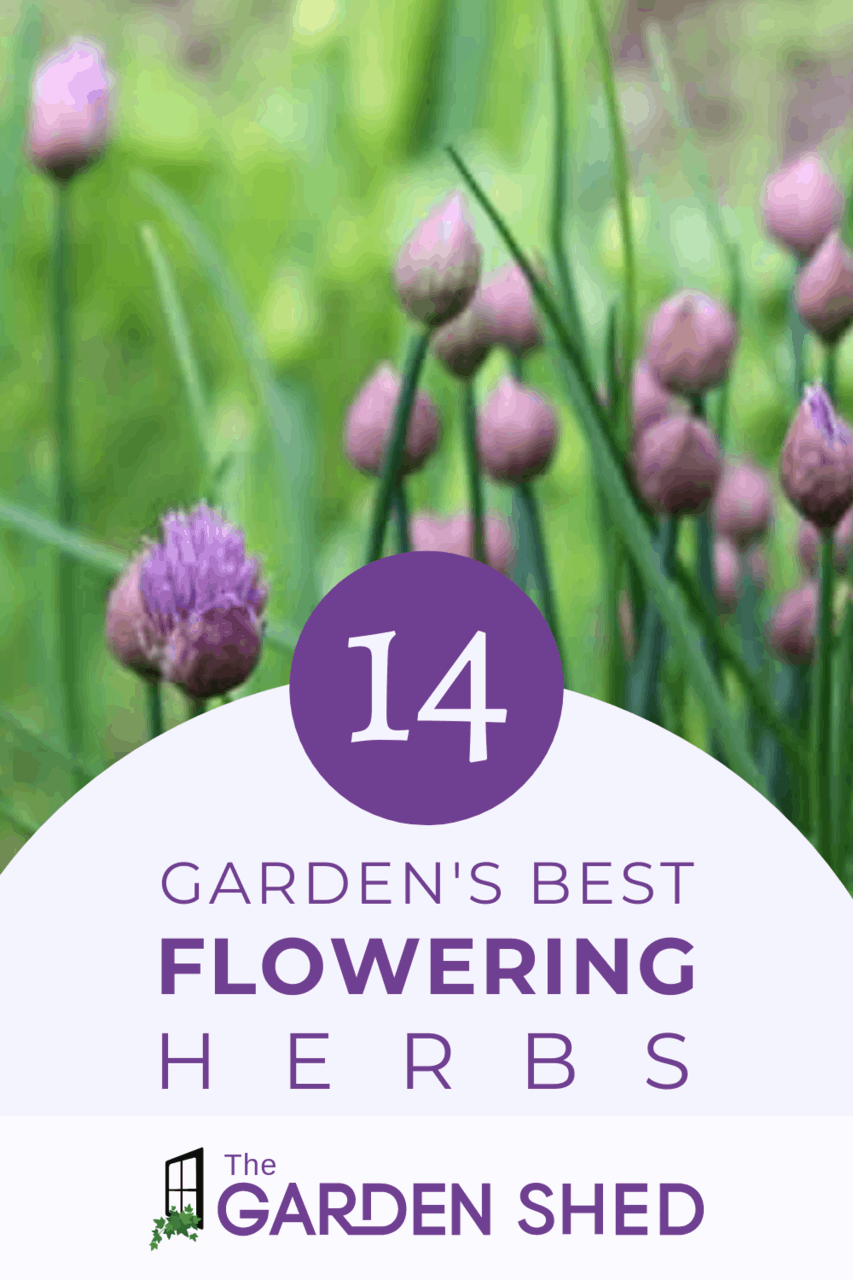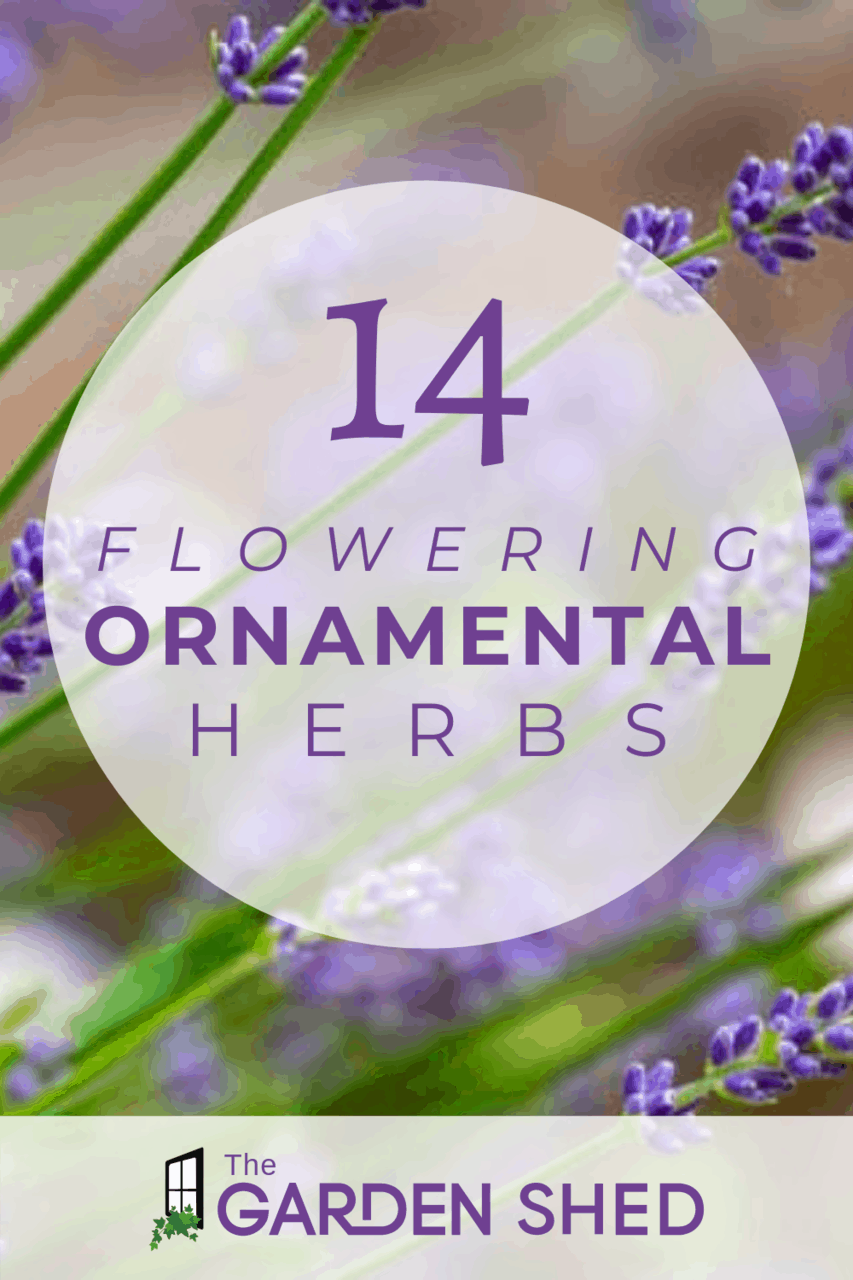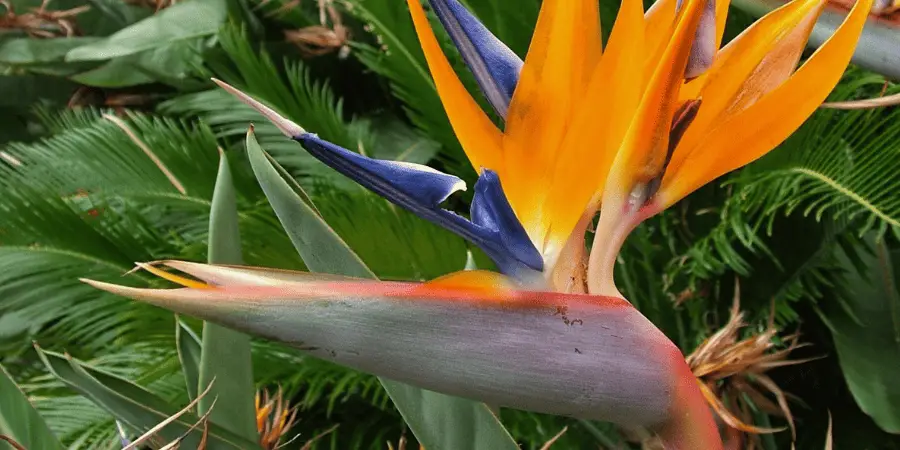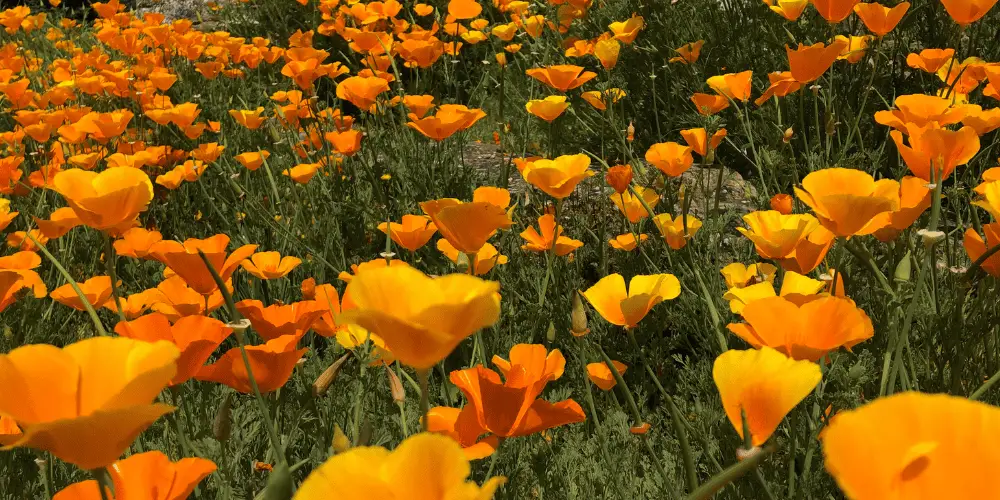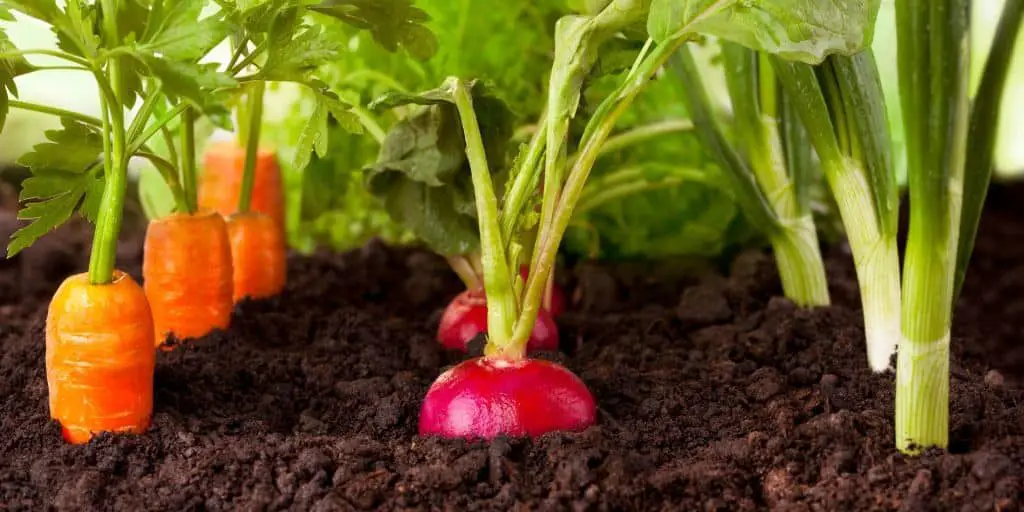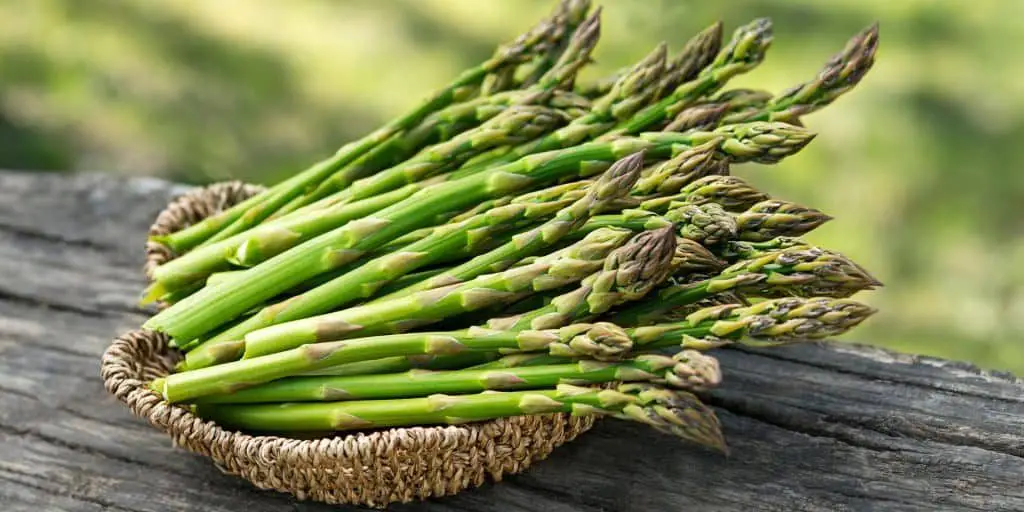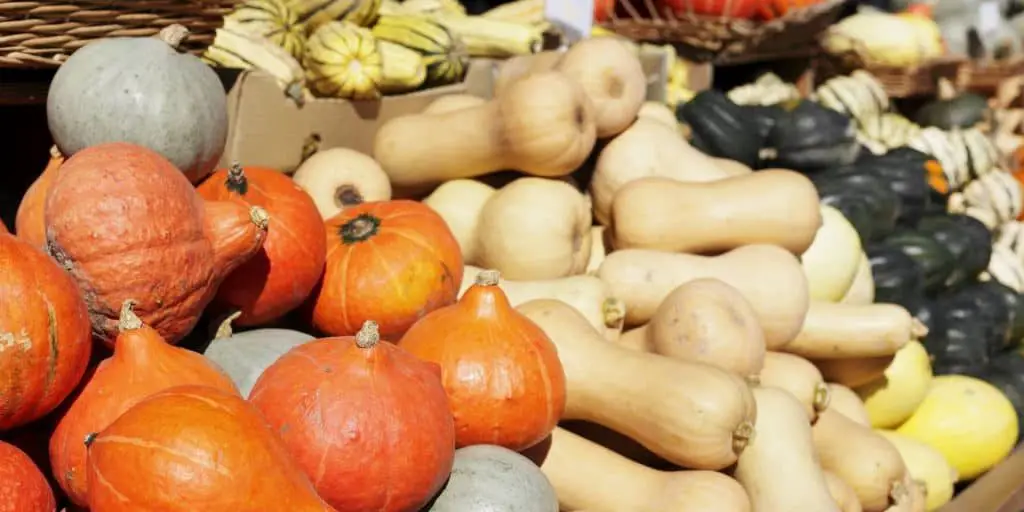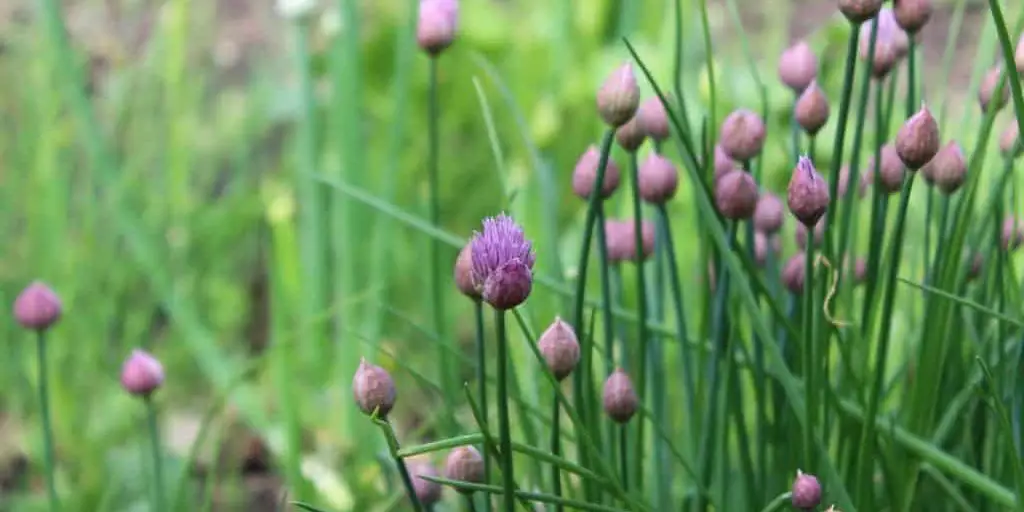
Flowering Herbs: 14 Great Ornamental Herbs
Flowering herbs, or ornamental herbs, are herbs that flower. An herb is a plant with savory or aromatic properties that are used to flavor food, give scent to perfume, or create medicine. If you love both herbs and flowers, these flowering herbs just might be perfect for your garden.
Anise
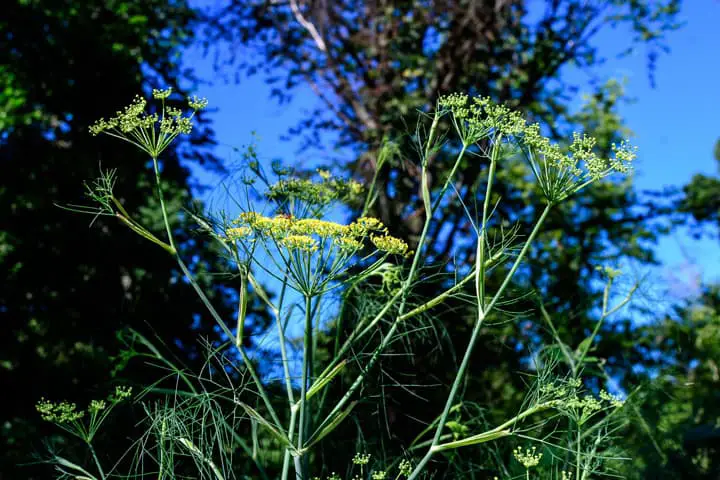
Anise is an annual herbaceous plant that has feathery leaves and white or purple flowers that bloom in summer. Traditional anise produces white star-shaped flowers and anise hyssop produces spikes of purple flowers. It is easy to grow from seed planted directly in the ground or in containers. Mature anise plants reach 1 1/2 to 3 feet tall and attract bees and butterflies.
The seeds have a strong flavor similar to licorice. Cooks use the leaves to flavor soups, salads, or other dishes. Anise is also used to flavor teas, cough drops and liqueurs. Botanical name: Pimpinella anisum. USDA Growing Zones 4 to 9.
Basil
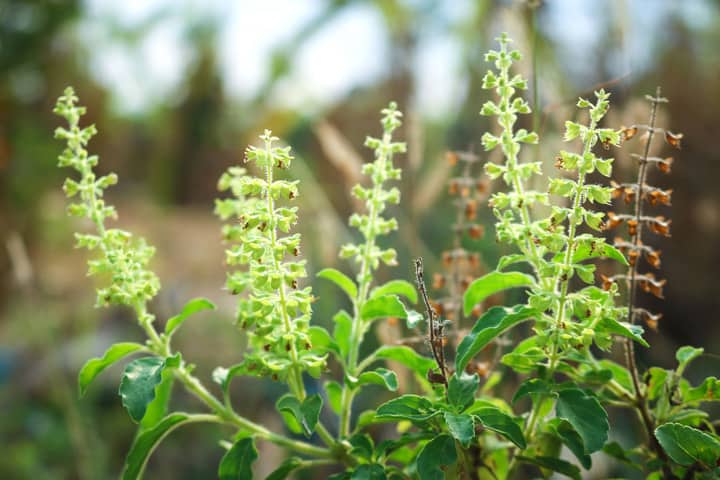
There are many varieties of basil that flower, but one of the prettiest is Thai basil. It has reddish-purple spikes that bloom in late summer. The leaves of this annual plant diminishes in flavor a bit, however, once the flowers start to bloom. Basil is an annual plant that thrives under full sun and frequent watering. Luckily, if your basil starts to wilt, watering it immediately should bring the leaves back to life. Mature basil plants reach 12 to 18 inches. Basil is a one of the flowering herbs that are great as outdoor container plants. Keep containers in a sunny location on your deck, porch, or lanai for easy access for watering and harvesting.
Basil leaves flavor a variety of dishes, notably Italian dishes such as pizza and spaghetti. It is also common in Indonesian, Vietnamese, and Thai cuisine.
Bee Balm
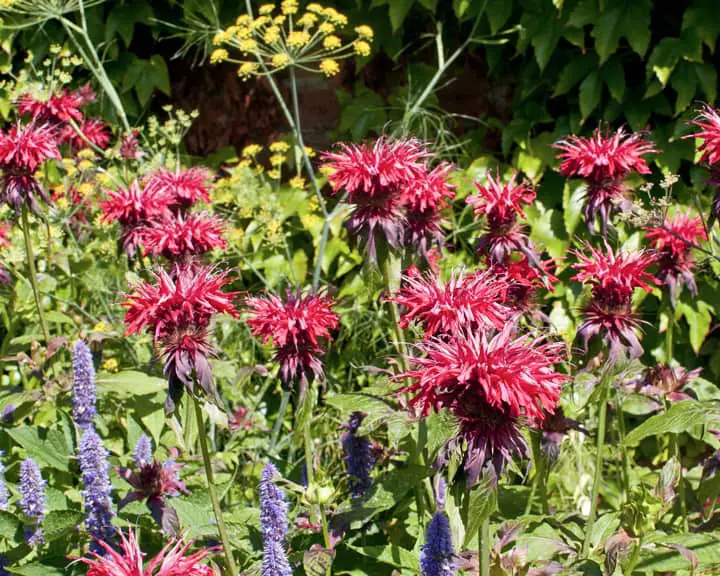
This perennial plant has red, pink, and purple blossoms that attract bees, butterflies, and hummingbirds. It typically grows between 2 and 4 feet tall, depending on the variety, although there are also dwarf varieties. Plant in soil that drains well in a site with good circulation to prevent mildew. It prefers full sun, but will tolerate light shade. Once established, bee balm is fairly drought tolerant.
Bee balm was used by the early Native American communities to create a medicinal tea. It is still used today for a variety of medicinal purposes. Crushed leaves can be used to flavor jellies, salads, and breads. Botanical name: Monarda. USDA Growing Zones: 3 to 9.
Chamomile
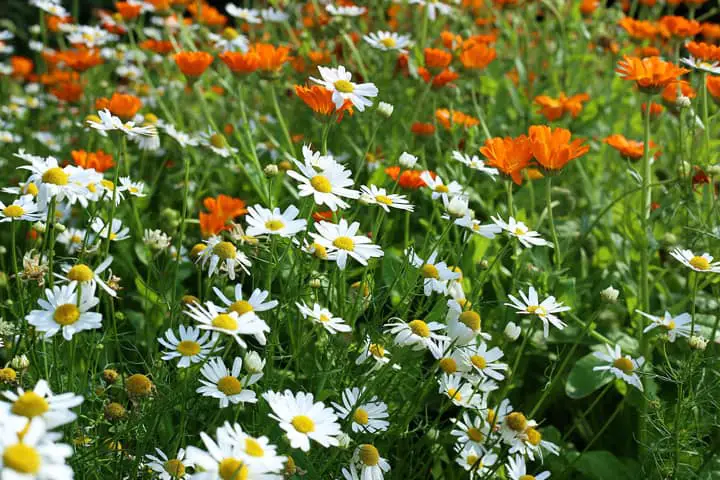
Chamomile plants have pretty daisy like flowers that are a great addition to any garden. If you are thinking about adding flowering herbs to your garden, chamomile is a great choice because of the pretty blooms. Two popular varieties are Roman chamomile and German chamomile. There is, however, a difference between the two types. Roman chamomile is a perennial that grows like a groundcover. It is used to soften the lines of rock gardens or stone walls. German chamomile is taller annual and looks more like a shrub. Chamomile self sows easily, and for that reason, it may be invasive. Deadhead flowers to prevent volunteer seedlings the following spring. The flowers attract bees, butterflies, and birds to the garden.
German chamomile is used to brew a soothing tea that many claim induces sleep. Medicinally, it has anti-bacterial, anti-inflammatory, and anti-allergenic properties. Botanical name: Matricaria recutita. USDA Growing Zones for Roman Chamomile 5 to 8.
Chives
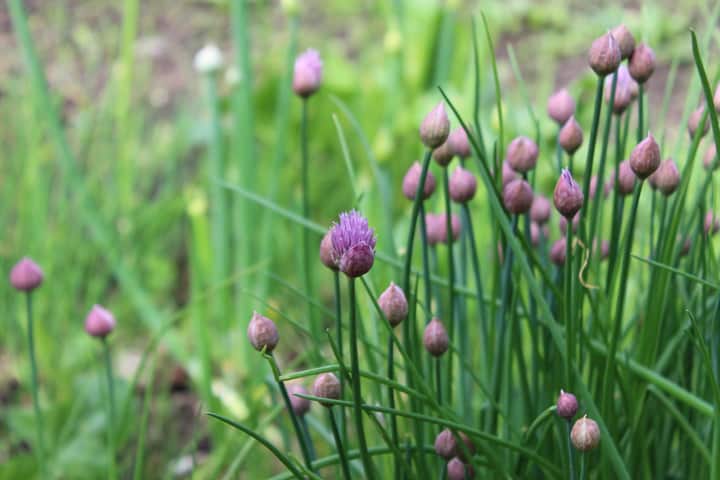
A hardy species from the onion family, chives is one of the easiest flowering herbs to grow. Chives are easy to grow from seed and will self sow and multiply. For this reason, remove seedlings promptly if they are not desired. The foliage is about 6 to 8 inches high and the tiny flowers are lavender. For best results, divide clumps every two or three years. Chives attract bees and repel deer.
The small, slender leaves are chopped and used for flavoring soups, stews, salads, and other dishes. Botanical name: Allium schoenoprasum. USDA Growing Zones 3 to 10.
Dill
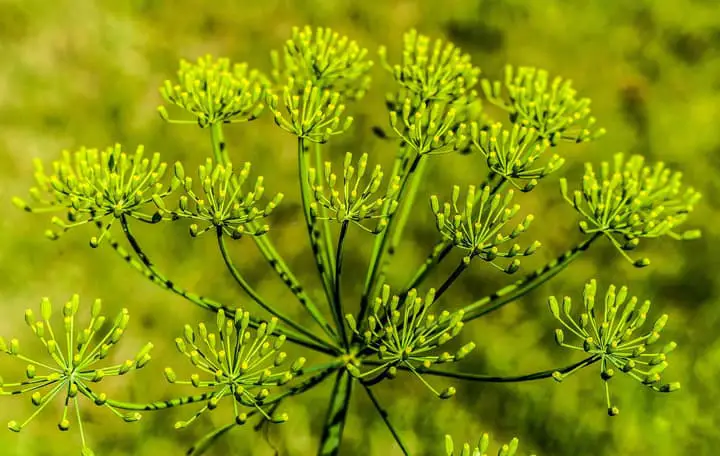
One of the most widely used flowering herbs, dill is a tall, 2 to 3 feet high, annual herb with bright yellow flowers. It does well planted in the garden or in containers. Dill requires well drained soil and thrives under full sun. Allow soil to dry out between watering. As a bonus, dill attracts pollinators such as bees and butterflies.
Dill is widely used as seasoning in a variety of dishes such as soups, stews, and roasted potatoes, but most notably, is used in the pickling of cucumbers to create dill pickles. Botanical name: Anethum graveolens. USDA Growing Zones 3 to 11.
Echinacea
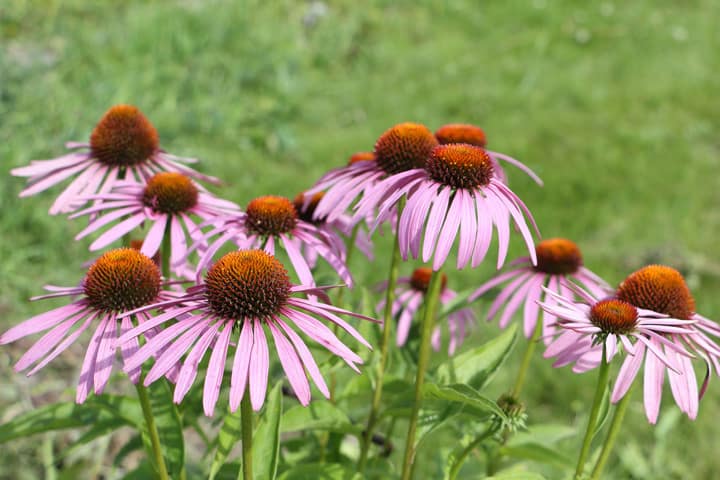
Also known as coneflower, this pretty and tall flower is often purple in color, and has daisy like flowers with petals that droop down. It is a beautiful plant for any perennial border, and also one of the most useful flowering herbs. Depending on the variety, coneflowers can grow from 1 to 4 feet tall. Most varieties do well in full sun or partial shade. Once established, echinacea is a tough plant that is drought tolerant. Coneflowers bloom from late summer to fall. Besides purple, there are varieties that are pink, yellow, and white. Additionally, coneflowers attract pollinators such as birds, bees, and butterflies to your garden.
The gardening channel website claims echinacea can be used as a tea to boost the immune system. It is also used in lotions and creams to treat skin conditions. Botanical name: Echinacea purpurea. USDA Growing Zones 3 to 8.
Feverfew
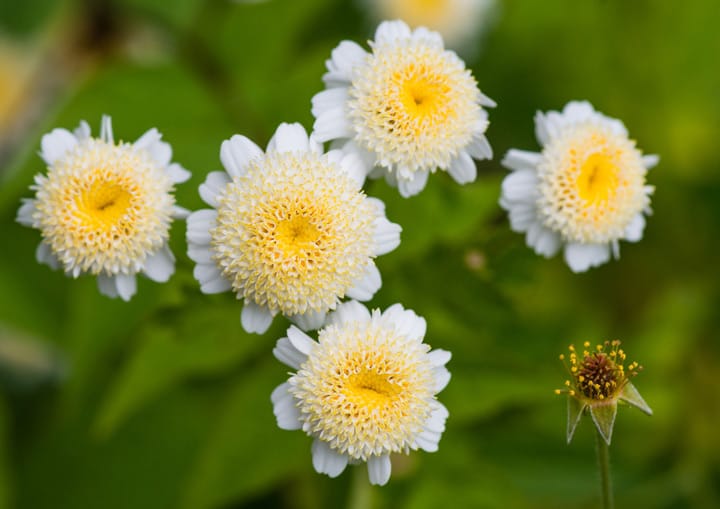
Similar in appearance to chamomile, feverfew has small white daisy like flowers with yellow centers. Also known as bachelor’s buttons, feverfew is easy to grow from seed. The foliage is somewhat spindly and grows to about 24 inches tall. It does well planted in the ground or in container. The plant does best in loamy soil in full sun. Feverfew is a perennial and, therefore, can be cut back to the ground after the first frost.
The herb is used medicinally to treat digestive issues and migraines. Botanical name: Tanacetum parthenium. USDA Growing Zones 5 to 10.
Garlic
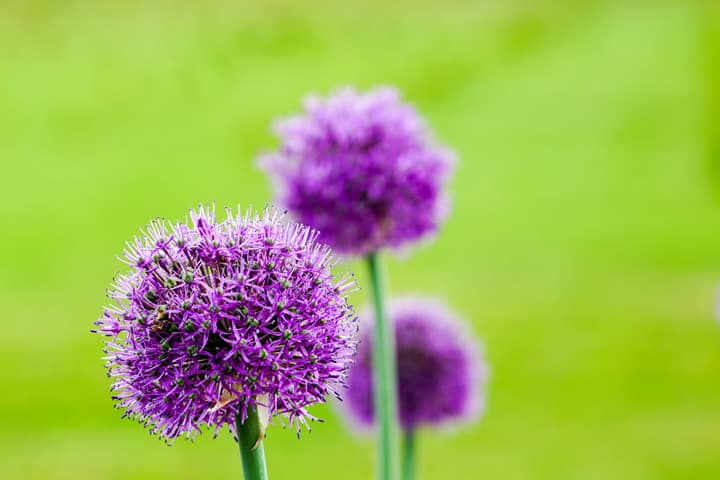
Almost everyone is familiar with the pungent aroma of garlic. What you might not know, however, is that garlic produces pretty purple flowers that can brighten your landscape. Luckily, garlic is easy to grow from seeds and it does not require much maintenance. Like chives, garlic is a member of the onion (allium) family. If you allow your garlic to flower, the plant will be diverting energy from the bulb to the flower. Therefore, the bulbs will be smaller. If you want both flowers and bigger bulbs, plant two batches of garlic and allow one to go through the flowering process.
The garlic bulbs are used to flavor a huge variety of dishes. Since ancient times, civilizations such as the Greeks, Babylonians, Chinese, and Romans all used garlic medicinally. Botanical name: Allium sativum. USDA Growing Zones 5 to 9.
Lavender
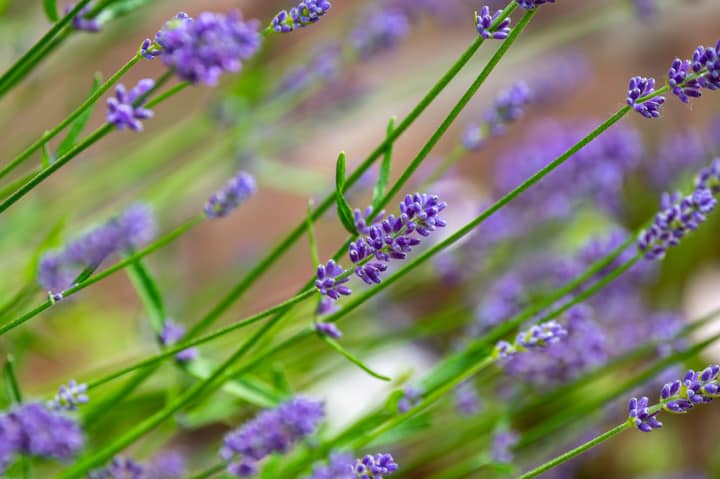
Lavender is one of the prettiest of the flowering herbs. Its fragrant purple spike of flowers grow in a shape similar to a shrub. As a result, lavender looks great when planted in a border. It does well planted directly into the garden or in containers. The plant prefers well-drained soil in a sunny location. It is drought-resistant and attractive to pollinators such as bees and butterflies. While the purple variety is the most popular, lavender is also available in shades of white, pink, and blue-violet.
Dried lavender is a common ingredient in soap, bath salts, potpourri, perfumes, lotions, and candles.. It also adds a distinct flavor to dishes such as baked goods. Botanical name: Lavandula. USDA Growing Zones 5 to 9.
Oregano
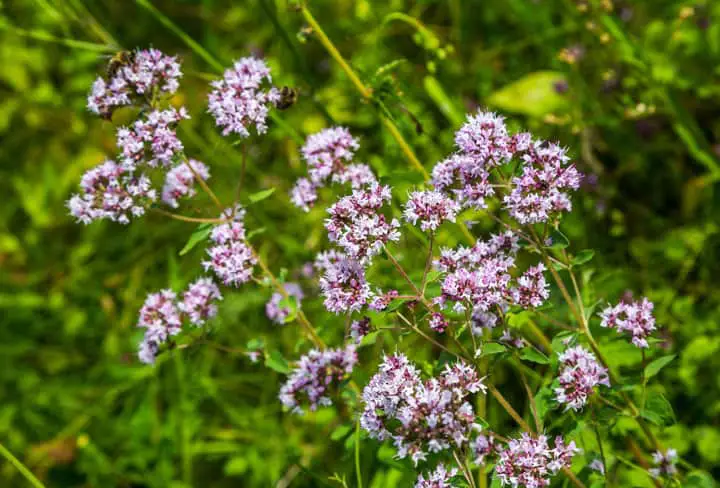
Oregano reaches a mature height of 12 to 36 inches tall and grows in a mound. Pale pink flowers bloom in midsummer. Oregano thrives in well-drained and somewhat sandy soil. Conveniently, it is also drought tolerant and does well when planted in a container. That makes oregano a perfect container plant for your patio.
Oregano flavors a variety of dishes including, rice, soups, stews, dressings, and various Italian dishes. Flavor varies depending on the variety grown. Botanical name: Origanum vulagare. USDA Growing Zones 4 to 8.
Pineapple Sage
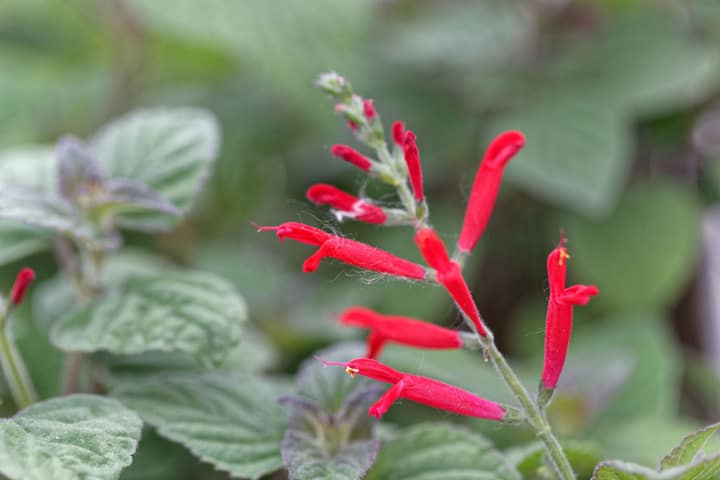
Pineapple sage is an interesting ornamental herb that has an aroma similar to a pineapple. This variety of sage has pretty jade green leaves and produces tall red flowers in the late summer and early fall. It is a perfect plant to bring a nice pop of color to the late season garden. Hummingbirds, bees, and butterflies flock to the bright red flowers. The plant prefers full sun and soil that drains well. It does not tolerate wet soil.
Interestingly, the leaves and flowers are both edible and are used in teas, salads, and as a garnish. Botanical name: Salvia elegans. Grown as a perennial in USDA Zones 8 to 10. Grown as an annual in zones 1 to 6.
Rosemary
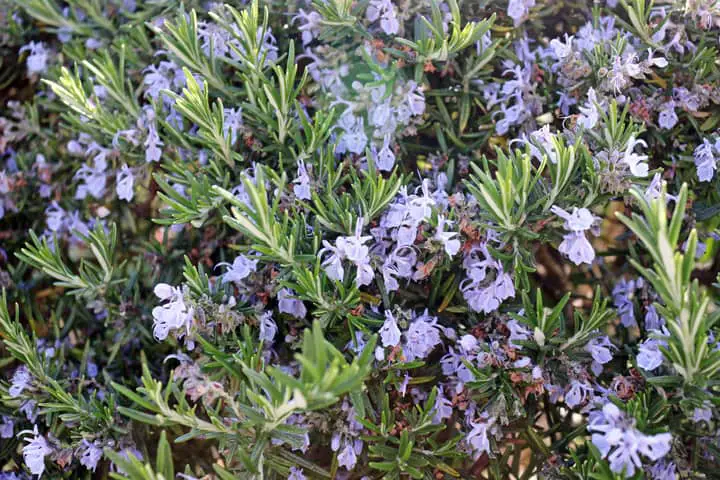
Rosemary is a shrub-like plant with green leaves that resemble the needles of a spruce tree. The herb can grow from 3 to 5 feet tall. In the summer, the rosemary blooms with white or purple flowers. If you live in an area with relatively mild winters, rosemary will thrive outdoors. The herb is also easy to grow in containers. Rosemary prefers full sun and soil that drains well. Like a lot of the flowering herbs, rosemary is a magnet for pollinators such as bees.
Rosemary is a popular herb for marinades and sauces. Botanical name: Rosmarinus officinalis. USDA Growing Zones 7 to 10 as a perennial. USDA Growing Zones 1 to 6 as an annual.
Spearmint
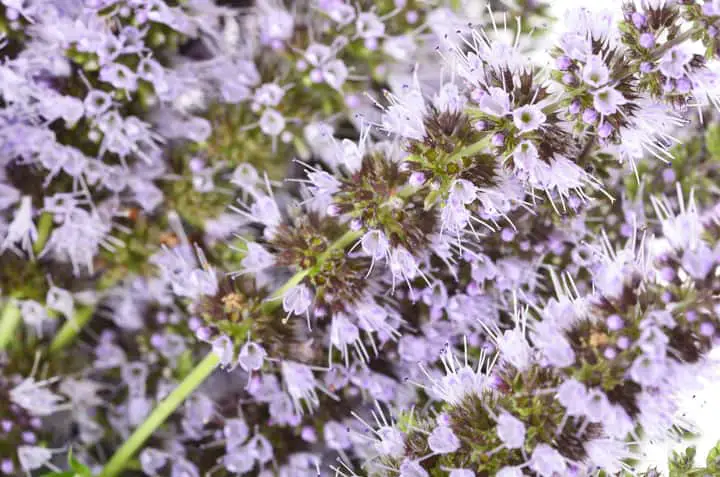
This pretty member of the mint family is popular for its refreshing taste. The spearmint plant is highly aromatic. It has pointed bright green leaves and creates lavender spike blooms. Spearmint grows best in partial shade in rich soil. It is easy to grow from seeds or plants. If left unchecked, spearmint is invasive, so many gardeners grow it in containers. Divide plants every two years for best results.
Spearmint is highly valued for its delicious taste in products such as mouthwash and chewing gum. Botanical name: Mentha spicata. USDA Growing Zones 3 to 11.
Flowering Herbs are Beautiful and Edible
In the case of flowering herbs, you can have your flowers and eat them too! Very often, gardeners are divided into those who love flowers, and those who love edible plants. With flowering herbs, we can all unite my gardening friends! Enjoy!
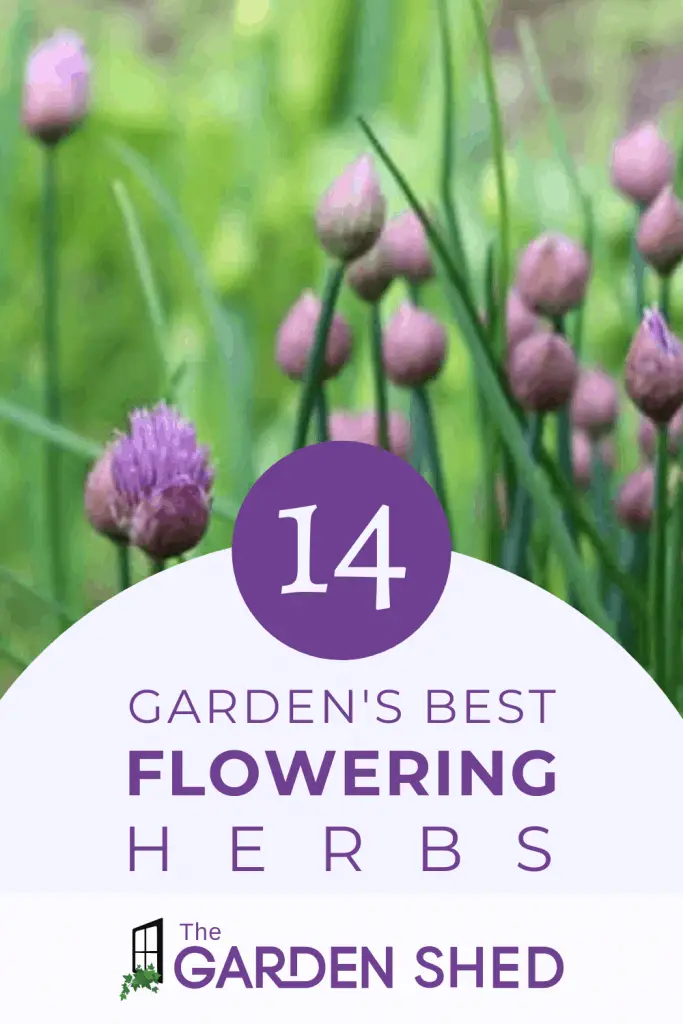
Related posts:
- Plants That Keep Snakes Away
- Flowers That Attract Bees to Your Garden
- Affordable Ways to Remove a Tree Stump
